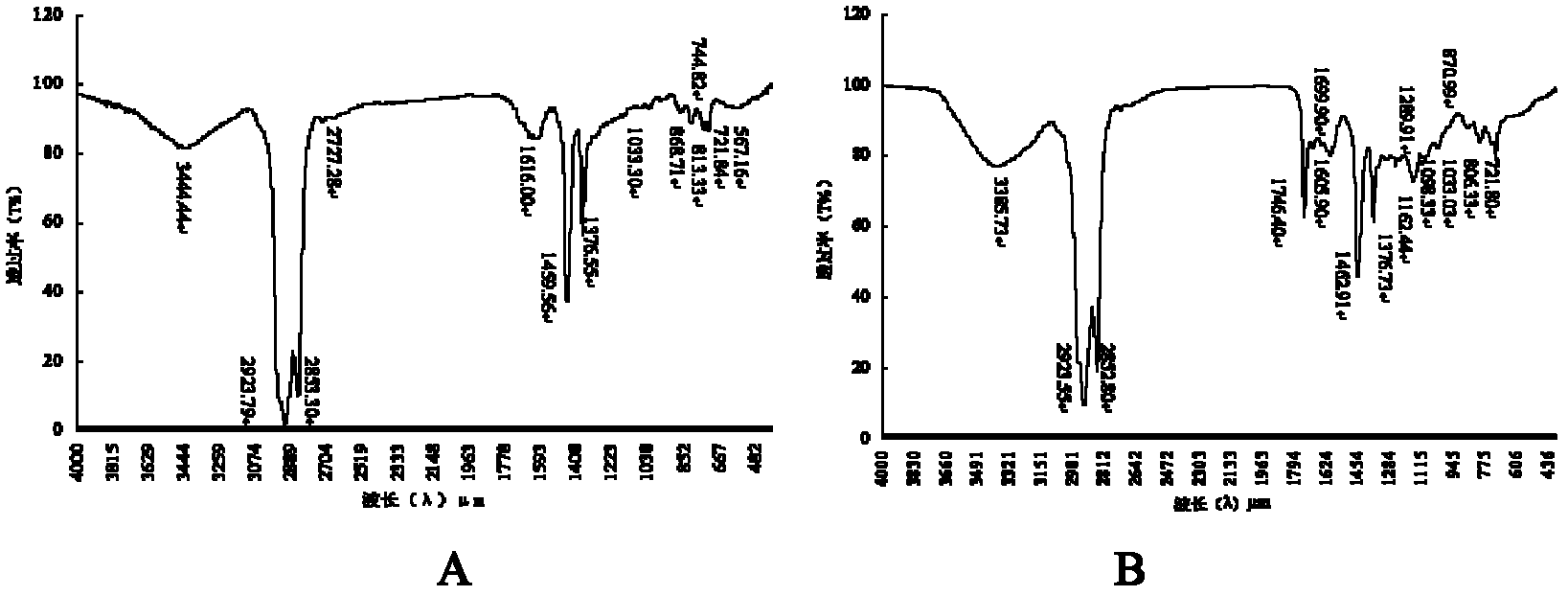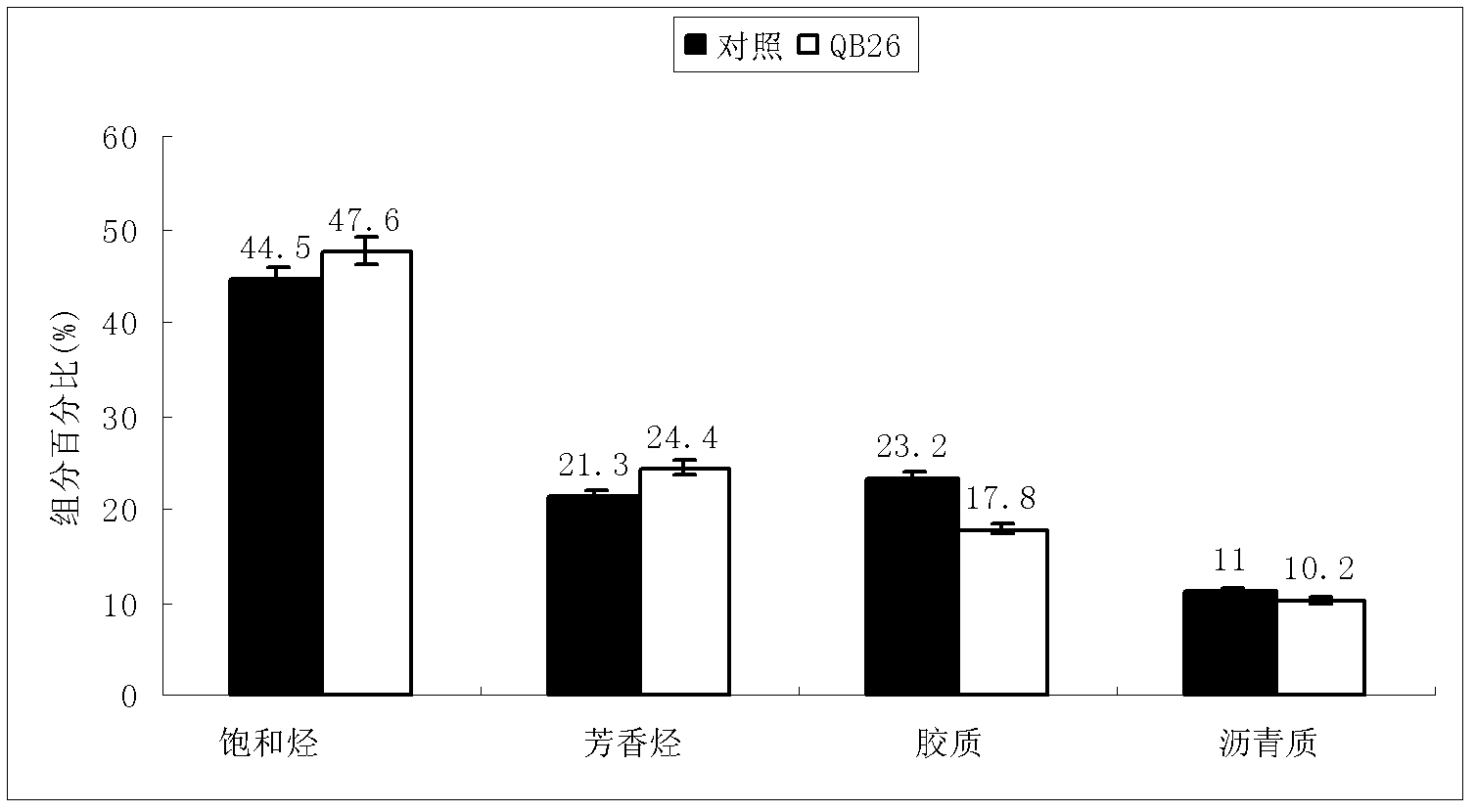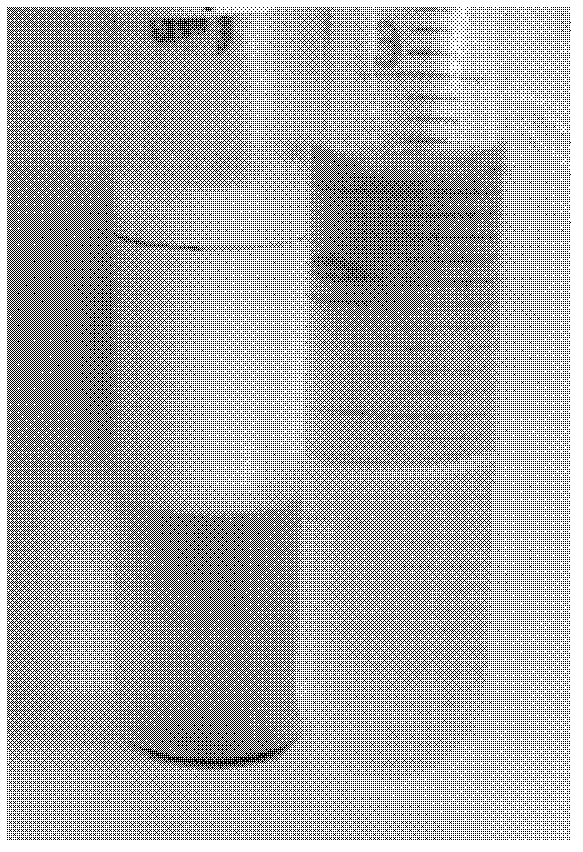Thermophilic and colloid degrading Bacillus licheniformis sp. QB26 and its application
A technology of Bacillus licheniformis and QB26, which is applied in the field of microbial biotechnology and environmental biology, and can solve problems such as poor crude oil fluidity and impact on oil recovery
- Summary
- Abstract
- Description
- Claims
- Application Information
AI Technical Summary
Problems solved by technology
Method used
Image
Examples
Embodiment 1
[0028] Screening and breeding of the Bacillus licheniformis sp. QB26 strain provided by the invention.
[0029] Get Bohai Oilfield produced water water sample, after shaking evenly, take 10ml with pipette, aseptically inoculate in 100ml inorganic salt basal medium (culture medium composition g / L: colloid 10, Na 2 HPO 4 0.6, KH 2 PO 4 0.2, NaNO 3 2. FeSO 4 0.02, MgSO 4 0.3, Cacl 2 0.01, yeast powder 0.5, distilled water, 1000ml, pH7.2, sterilized at 121°C for 30min), cultured on a shaker at 55°C for 7 days with reciprocating shaking. Dilute the enriched shake flask with sterile water to 10 -5 , 10 -6 , 10 -7 . Spread on the new Wang's + liquid wax and LB plates, culture at 55°C for 2 days, and select strains with different colony shapes and sizes. Observe the colonies that grow. Single colonies were picked and checked for purity using a microscope. Each bacterial colony grown at high temperature was inoculated into inorganic salt sucrose medium (sucrose 10, Na...
Embodiment 2
[0033] The morphological characteristics and physiological and biochemical characteristics of the Bacillus licheniformis sp. QB26 strain provided by the present invention.
[0034] According to the experimental method of "Bergey's Manual of Systematic Bacteriology" (Vol. VIII), the Gram staining, cell size and shape, presence or absence of flagella and spores, growth temperature, growth pH range, and NaCl tolerance were detected. Catalase, V-P, mouse acute oral, casein hydrolysis, gelatin hydrolysis, starch hydrolysis, nitrate reduction to nitrite, cellulose hydrolysis, glucose gas production, tyrosine hydrolysis, phenylalanine dehydrogenase, Yolk lecithinase, NaCl and KCl requirement, allantoin and urea salt requirement, oxidase, lysozyme resistance, D-glucose, L-arabinose, D-xylose, D-mannitol acid production, citrate and propionate requirements etc. experiments.
[0035] The results showed that the strain was positive for Gram staining, and the thallus was short rod-shaped...
Embodiment 3
[0037] Morphological characteristics of Pseudomonas aeruginosa sp. DB strain provided by the present invention.
[0038] Carry out with reference to the experimental method of "Bergey's Manual of Systematic Bacteriology" (Vol.VIII), and detect its Gram staining, thalline size and shape, presence or absence of flagella and spores, and growth temperature.
[0039] The results showed that the strain was negative for Gram staining, and the thallus was short rod-shaped with single flagella at the end, capable of movement, aerobic growth, and no spore production. ), most of the cells are club-shaped or linear, arranged in pairs or short chains. The growth temperature is 25-42°C, the optimum temperature is 37°C
PUM
| Property | Measurement | Unit |
|---|---|---|
| temperature | aaaaa | aaaaa |
Abstract
Description
Claims
Application Information
 Login to View More
Login to View More - R&D
- Intellectual Property
- Life Sciences
- Materials
- Tech Scout
- Unparalleled Data Quality
- Higher Quality Content
- 60% Fewer Hallucinations
Browse by: Latest US Patents, China's latest patents, Technical Efficacy Thesaurus, Application Domain, Technology Topic, Popular Technical Reports.
© 2025 PatSnap. All rights reserved.Legal|Privacy policy|Modern Slavery Act Transparency Statement|Sitemap|About US| Contact US: help@patsnap.com



